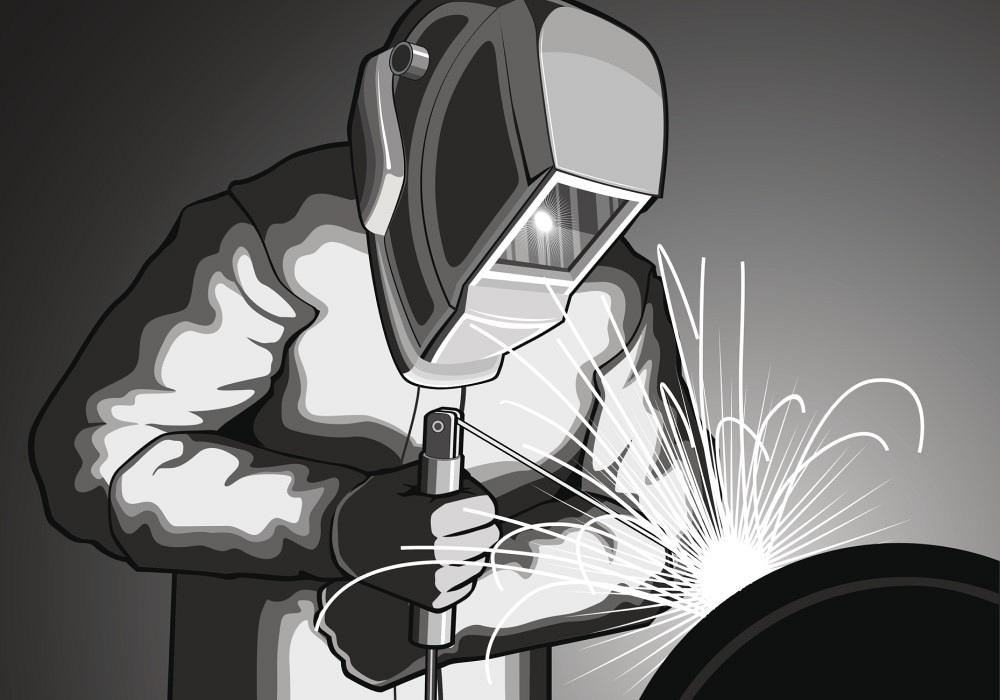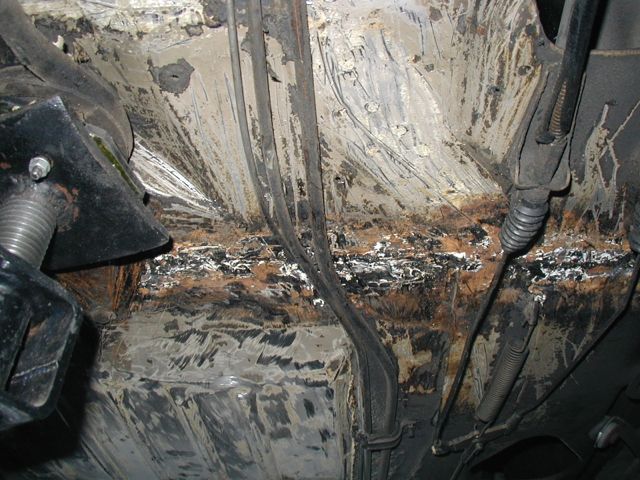Typical Welding Repair Service Issues and How to Address Them Properly
Welding repair services frequently encounter a series of issues that can endanger the integrity of the end product. Common issues consist of insufficient penetration, porosity, and misalignment, to name a few. Each defect provides one-of-a-kind obstacles that require details techniques for resolution. Comprehending these problems is crucial for welders aiming to enhance their outcomes and skills. This conversation will certainly explore these typical welding fixing issues and reliable techniques to address them.
Inadequate Penetration
Poor infiltration happens when the weld metal stops working to totally fuse with the base product, resulting in weak joints and potential structural failings. This problem frequently comes from inadequate warm input, wrong electrode angle, or improper welding speed. Welders may run into inadequate penetration because of a miscalculation of the essential specifications for a particular material thickness or type. In addition, contamination on the base product's surface can hinder reliable bonding, intensifying the problem. To address inadequate penetration, welders should guarantee appropriate settings on their equipment and maintain a clean work surface. Routine inspection of welds is advised to recognize any deficiencies early, enabling timely corrections and the avoidance of endangered structural honesty in bonded assemblies.
Porosity
Porosity is a typical problem in welded joints that manifests as little gas bubbles caught within the weld steel. This flaw can endanger the stability of the weld, resulting in minimized toughness and prospective failure under anxiety. Montana Mobile Welding and Repair Belgrade Welding. Porosity typically occurs from contamination, wetness, or incorrect welding strategies, which enable gases to escape right into the molten weld pool. To attend to porosity, welders ought to assure appropriate surface area prep work, preserve a tidy workplace, and utilize suitable welding specifications. Additionally, picking the right filler material and securing gas can mitigate gas entrapment. Regular evaluation and testing of welds can aid recognize porosity early, ensuring timely rehabilitative actions are taken, thereby preserving the top quality and dependability of the bonded framework
Imbalance
Misalignment in welding can develop from various aspects, consisting of improper configuration and thermal development. Comprehending the origin causes is essential for reliable resolution. Numerous adjustment techniques are offered to straighten elements and ensure structural stability.
Root causes of Misalignment
Welding imbalance usually originates from a variety of underlying concerns that can endanger architectural integrity. One primary reason is incorrect fit-up of components before welding, which can lead to gaps and uneven surfaces. Variants in thermal growth during the welding procedure can also cause distortion, particularly if the materials being signed up with have various coefficients of development. Furthermore, poor fixturing and clamping might fall short to hold elements safely in position, resulting in activity throughout welding. Improperly maintained devices, including welding makers and tools, might present disparities in the weld bead, additional adding to misalignment. Driver error, stemming from not enough training or experience, can additionally play a significant function in producing misaligned welds.

Improvement Techniques Readily Available
Resolving misalignment effectively requires a mix of corrective methods tailored to the particular concerns at hand. One typical approach is the use of components or jigs to hold parts in the appropriate setting throughout welding, guaranteeing consistent alignment. Furthermore, pre-heating the products can help in reducing distortion and enhance fit-up. For substantial misalignment, mechanical adjustment methods, such as utilizing hydraulic jacks or clamps, can be utilized to correct the position prior to welding. Post-weld heat therapy might also be necessary to soothe tensions triggered by misalignment. Mindful assessment and adjustment throughout the arrangement phase can prevent imbalance concerns from coming to be significant issues, promoting a smoother welding procedure and boosting total architectural stability.
Distortion
Distortion is an usual challenge in welding that can develop from numerous elements, consisting of uneven heating & cooling. Understanding the sources of distortion is crucial for executing reliable avoidance techniques. Resolving this issue not only enhances architectural stability however additionally boosts the overall high quality of the weld.
Reasons for Distortion
When subjected to the intense warmth of welding, materials typically undertake modifications that can bring about distortion. This phenomenon mainly emerges from thermal development and tightening throughout the welding process. As the weld location warms up, the material broadens; upon air conditioning, it acquires, which can develop inner tensions. Additionally, uneven heating throughout a workpiece can intensify these stress and anxieties, causing bending or bending. The sort of material additionally plays a substantial function; steels with varying thermal conductivity and coefficients of growth may react in a different way, causing unpredictable distortions. In addition, bad joint layout and insufficient fixturing can add to misalignment during welding, boosting the likelihood of distortion. Understanding these causes is vital for efficient welding repair work and prevention techniques.
Avoidance Techniques
Efficient prevention methods for distortion during welding emphasis on managing warm input and ensuring appropriate joint style. Maintaining a consistent heat input assists to reduce thermal development and contraction, which can cause distortion. Using strategies such as pre-heating the work surface can additionally reduce the temperature slope, promoting uniform heating. Additionally, selecting appropriate joint layouts, such as T-joints or lap joints, can improve security and reduce anxiety focus. Applying correct fixturing to secure the workpieces in position additionally help in preserving placement during the welding procedure. Finally, staggered welding sequences can distribute warm extra equally, preventing local distortion. By using these methods, welders can greatly reduce the possibility of distortion and enhance the total high quality of their welds.
Cracking
Fracturing is a typical issue experienced in welding repair work, often arising from numerous variables such as incorrect air conditioning prices, material selection, or insufficient joint prep work. The event of fractures can significantly compromise the integrity of the weld, bring about potential failings throughout operation. To resolve this concern, welders have to initially analyze the origin, making sure that materials are suitable and appropriately chosen for the specific application. In addition, controlling the air conditioning price during the welding procedure is essential; fast air conditioning can induce tension and cause splitting. Correct joint design and preparation additionally contribute to minimizing the risk. Implementing these methods can enhance weld quality and sturdiness, ultimately decreasing the chance of breaking in completed weldments.

Incomplete Fusion
A substantial problem in welding repair work is insufficient fusion, which happens when the weld metal does not effectively bond with the base material or previous weld passes - Montana Mobile Welding and Repair Fabrication. This issue can lead to weak points in the joint, potentially jeopardizing the integrity of the welded structure. Aspects adding to insufficient combination consist of not enough heat input, incorrect welding technique, and contamination of the surface areas being joined. To address this issue successfully, welders should guarantee correct pre-weld cleaning and surface prep work, in addition to readjust their welding parameters to achieve sufficient infiltration and combination. Routine examination throughout the welding process can also help recognize incomplete fusion early, permitting for timely rehabilitative measures to boost the overall top quality of the weld
Overheating
While welding repairs can improve structural stability, overheating offers a considerable challenge that can cause product deterioration. Excessive heat during welding can alter the mechanical buildings of steels, causing decreased toughness, boosted brittleness, and bending. This phenomenon is specifically essential in high-stress applications where architectural integrity is vital. Recognizing overheating can include visual assessments for staining or distortion, in addition to monitoring temperature level during the welding process. To mitigate the threats related to getting too hot, welders must use ideal methods, such as regulating heat input, changing traveling rate, and using suitable filler materials. In addition, applying pre- and post-weld warm therapies can help bring back product homes and boost the total quality of the fixing, guaranteeing lasting efficiency and safety and security.
Frequently Asked Questions
What Are the Typical Indications of a Welding Defect?

How Can I Evaluate My Welds for High quality?
To test welds for quality, one can make use of visual assessments, ultrasonic testing, and radiographic techniques. Each technique assures architectural integrity, determines issues, and confirms adherence to defined criteria, eventually boosting the integrity of the welded joints.
What Security Precautions Should I Take While Welding?
When welding, one should prioritize security by putting on ideal individual protective equipment, making sure proper ventilation, safeguarding combustible products away, keeping a tidy workspace, and being conscious of surroundings to protect against injuries and crashes.
Can I Repair a Weld Without Remodeling the Entire Joint?
Fixing a weld without renovating the whole joint is possible, depending upon the damages (Belgrade Welding). Strategies such as grinding, including filler material, or utilizing a welding process can efficiently attend to specific problems while protecting the surrounding framework
What Equipment Are Important for Efficient Welding Repair Works?
Important tools for effective welding repair work consist of a welding equipment, cord brush, grinder, protective gear, clamps, and filler products. Each tool plays a crucial function in making certain quality and safety throughout the repair procedure. Porosity typically arises from contamination, dampness, or inappropriate welding methods, which enable gases to escape right into the liquified weld pool. Poorly maintained equipment, including welding machines and tools, might present incongruities in the weld bead, further adding to misalignment. When subjected to the extreme warmth of welding, materials often undertake adjustments that can lead to distortion. Cracking is an usual concern encountered in welding fixings, commonly resulting from numerous aspects such as incorrect air conditioning prices, material option, or insufficient joint preparation. A significant concern in welding fixings is incomplete fusion, which happens when the weld metal does not sufficiently bond with the base material or previous weld passes.